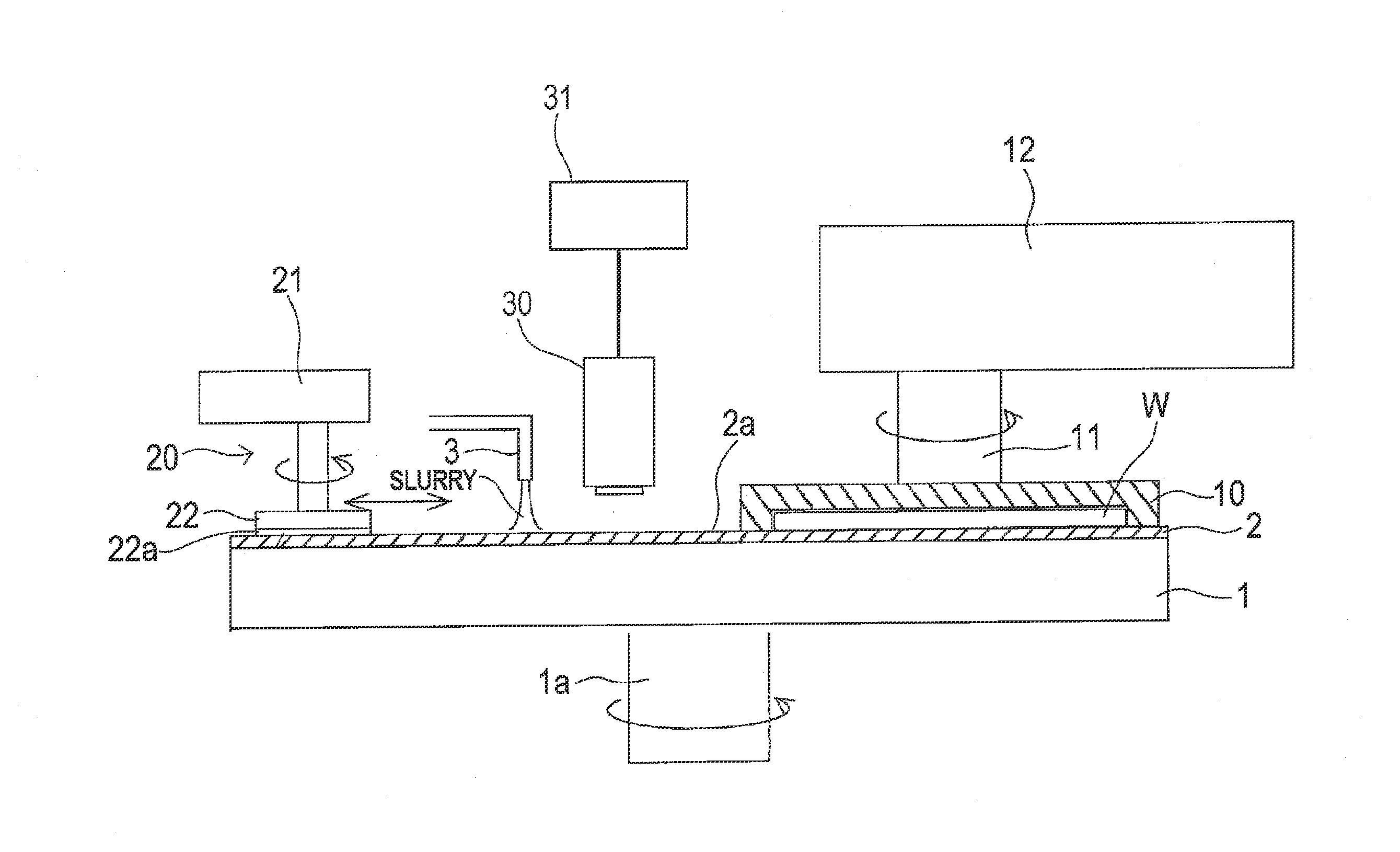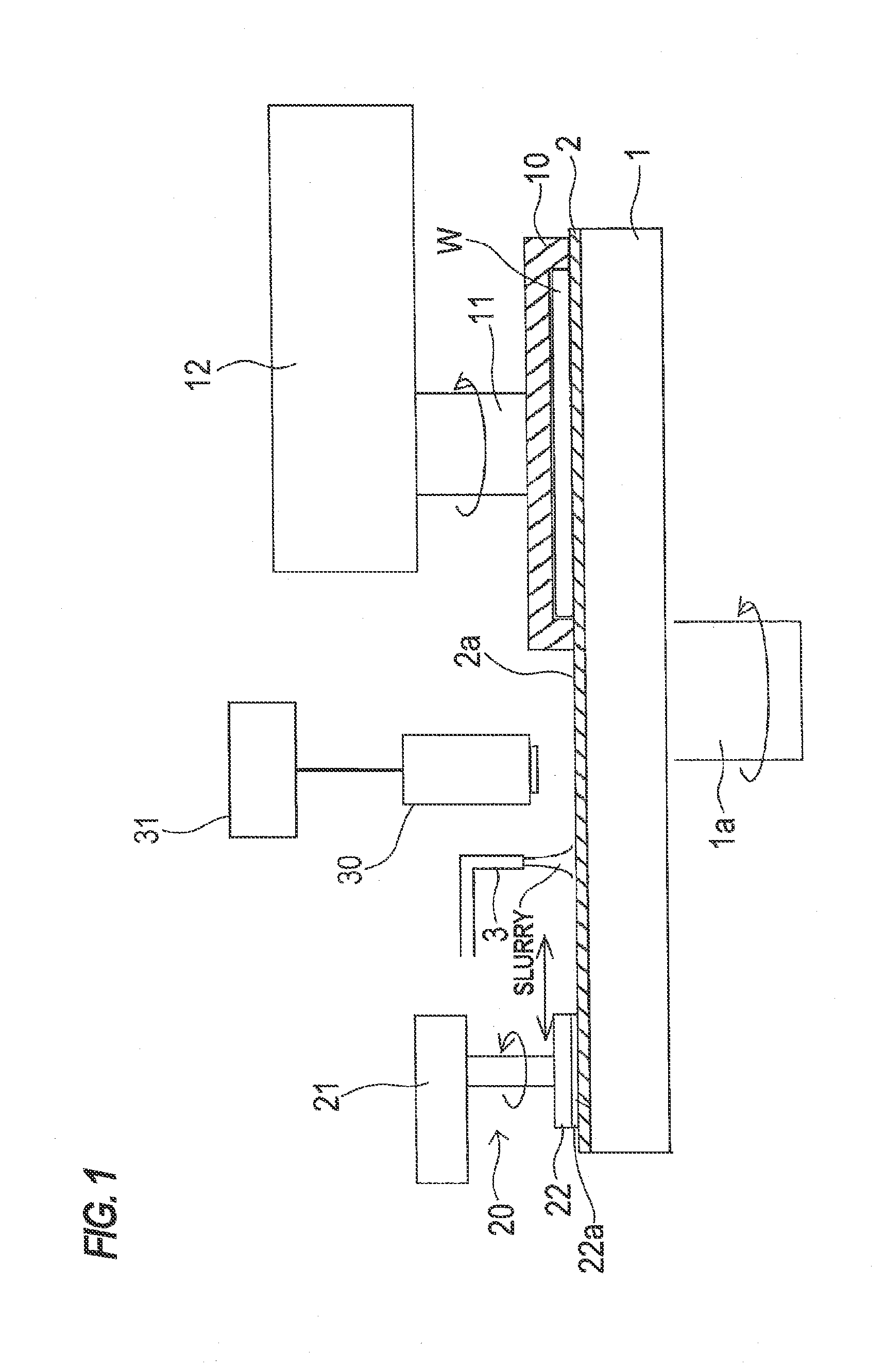Measuring method of surface roughness of polishing pad
a polishing pad and surface roughness technology, applied in the direction of lapping machines, instruments, abrasive surface conditioning devices, etc., can solve the problems of deteriorating polishing performance, poor film coating performance (step coverage), and large steps, and achieve strong relationship with polishing performance
- Summary
- Abstract
- Description
- Claims
- Application Information
AI Technical Summary
Benefits of technology
Problems solved by technology
Method used
Image
Examples
Embodiment Construction
[0039]A measuring method of a surface roughness of a polishing pad according to an embodiment will be described below with reference to FIGS. 1 through 5. Like or corresponding parts are denoted by corresponding reference numerals in FIGS. 1 through 5 and will not be described below repetitively.
[0040]FIG. 1 is a schematic view showing an entire structure of a polishing apparatus which performs a measuring method of a surface roughness of a polishing pad according to an embodiment. As shown in FIG. 1, the polishing apparatus includes a polishing table 1, and a top ring 10 for holding a substrate W such as a semiconductor wafer as an object to be polished and pressing the substrate W against a polishing pad 2 on the polishing table 1. The polishing table 1 is coupled via a table shaft 1a to a polishing table rotating motor (not shown) disposed below the polishing table 1. Thus, the polishing table 1 is rotatable about the table shaft 1a. The polishing pad 2 is attached to an upper su...
PUM
 Login to View More
Login to View More Abstract
Description
Claims
Application Information
 Login to View More
Login to View More - R&D
- Intellectual Property
- Life Sciences
- Materials
- Tech Scout
- Unparalleled Data Quality
- Higher Quality Content
- 60% Fewer Hallucinations
Browse by: Latest US Patents, China's latest patents, Technical Efficacy Thesaurus, Application Domain, Technology Topic, Popular Technical Reports.
© 2025 PatSnap. All rights reserved.Legal|Privacy policy|Modern Slavery Act Transparency Statement|Sitemap|About US| Contact US: help@patsnap.com



